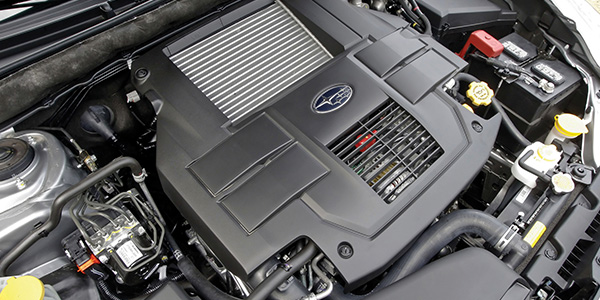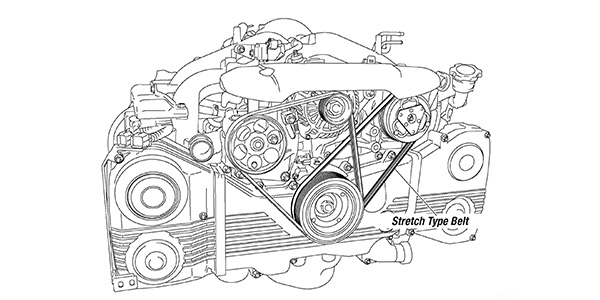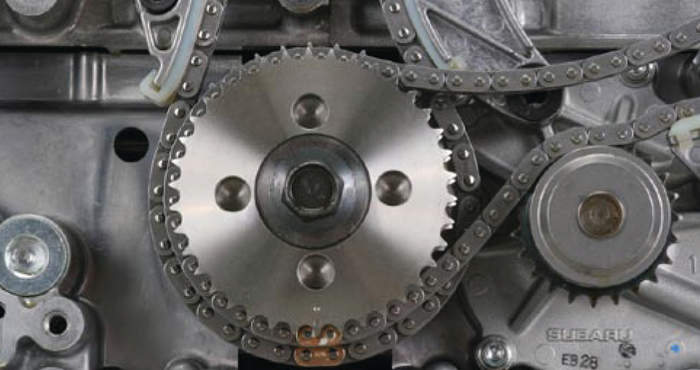
If you see a belt on a late-model Subaru that does not have an automatic tensioner and runs between only two or three components, it’s probably a stretch belt. These types of belts typically are used to turn the A/C compressor on the 2.5L four-cylinder engine in 2008 and later models.
The stretch belt can help to simplify the serpentine belt system on the boxer engine. It can also increase the efficiency of the engine by allowing it to run with less tension on the alternator and power steering. Beyond that, it can extend the life of the alternator by reducing the load on the bearings.
Inspection
Subaru stretch belts can last 100,000 miles or more. Cracks or damage to the backing of a worn belt will not be evident to the naked eye. The new materials used to manufacture a stretch belt will not crack or separate like older belts before the grooves are worn. This is why an inspection method that measures groove depth is recommended. You simply cannot go by mileage recommendations alone.
Belt inspection gauges are available from manufacturers and distributors. Poor pulley alignment is the No. 1 cause of belt noise and premature wear of stretch belts. If the pulleys have poor alignment, the belt will be worn on the edges and might look frayed.
Worn Belts
When a stretch belt exceeds wear specs, it can no longer effectively grip the pulleys and will start slipping. The primary cause for this is when material is removed from the belt’s grooves, rather than it stretching and losing tension.
Over time, small debris and the interaction with the pulleys will wear the shoulders and valleys of the grooves. When the grooves become too shallow, the pulleys bottom out. When this happens, the walls of the groove can no longer grip the pulley and it slips.
If you are removing an old stretch belt off of a Subaru, just cut it. Even if the belt is still in excellent shape, the act of pulling the belt over the A/C compressor clutch or crankshaft pulley will damage the inner core.
These belts have a thermo-elastic core that is designed to keep tension on the pulleys during a long lifecycle. The material acts like shrink tubing for a wiring harness. Once the belt has been run and exposed to the underhood temperature, the heat will decrease the length of the belt and, therefore, properly tension it.
Never use a screwdriver or other sharp object to install the belt. If the belt is cut, or the surface or grooves of the pulleys are damaged, the belt will eventually fail. Special tools are available from various tool and belt manufacturers that act as a ramp on the leading edge of the pulley. Some applications will require special tools to hold the belt on the accessory pulley, as is the case for the Subaru A/C compressor pulley.
There are many tool designs, but they all perform the same task of pulling the belt over the leading edge of the crankshaft pulley without damaging the belt. Always follow the directions for proper tool placement and for the correct direction to turn the crankshaft. After the belt is installed, confirm that the belt is in the grooves and recheck that there are no alignment problems. Run the engine for a few seconds before doing this final check.














